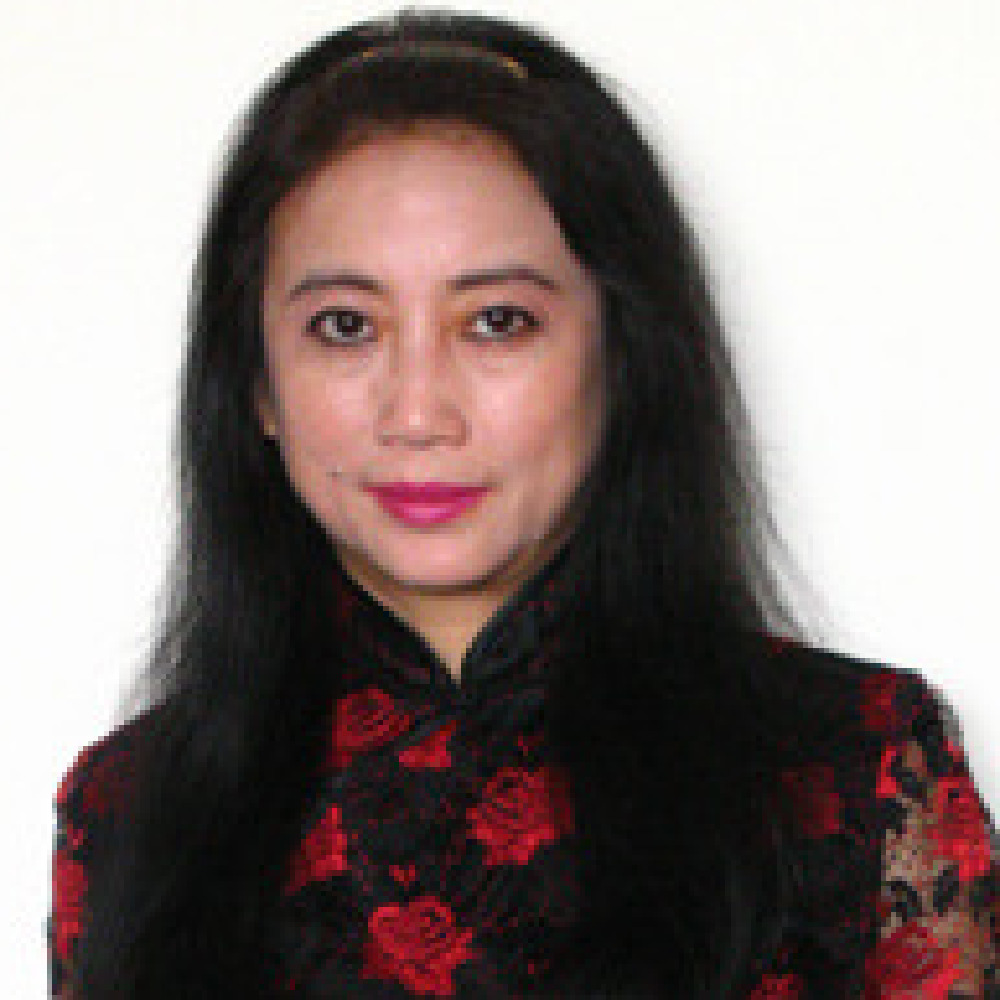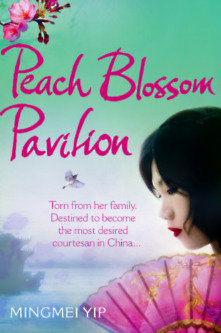
Mingmei Yip

Peach Blossom Pavilion is the story of the last of the Chinese prestigious prostitutes, women who were not only available sexually but also entertained their clients with the four refined arts: music, poetry, painting and calligraphy. As in my other novels, my heroine is a young woman whom fate has thrust upon a path she did not chose, but by determination overcomes all odds to find success and happiness.
In the five thousand years of Chinese history, countless young women were forced into prostitution, but only a fortunate few were able to escape to a better life. In writing Peach Blossom Pavilion, I wanted to give these courageous, yet anonymous, women their voice.
My novel opens when at the age of thirteen, Xiang Xiang’s mother is tricked into giving her daughter to a prostitution house, the Peach Blossom Pavilion of the title. Her mother renounced the world and entered a Buddhist temple. All this happened because Xiang Xiang’s father was executed for a murder he did not commit. In that era, criminals’ families were ostracized. Xiang Xiang is befriended by a more experienced courtesan, Pearl, who all too soon tragically ends her own life. Though now friendless, Xiang Xiang manages to survive the dangerous life at Peach Blossom Pavilion to become the most sought after courtesan in Shanghai, and then escape to a normal life. The entire story is as told by Xiang Xiang at the age of ninety-eight to her great-grand daughter.
The book has been compared to Anchee Min and Memoirs of a Geisha, so how does this make you feel?
I’m happy to be compared with authors I admire, like Anchee Min, Arthur Golden, and Amy Tan. Tan’s recent novel Valley of Amazement is also about a young courtesan in 1930s Shanghai. Having said this, I think the three of us write very differently. After all, China has 5,000 years of history and more than a billion people, so there are many stories waiting to be told about life there. Until quite recently, life in China was quite difficult for women and so stories about Chinese women often are about overcoming these difficulties.
Please tell us a bit about your other works.
My other works are:
Palace Of The Bright Moon, is a Chinese phrase for femme fatales. My story is about three of them -- Camilla, a nightclub singer who is forced to become a spy, Shadow, a magician who jumps naked off a tall building, and Rainbow Chang, a gender-ambiguous gossip columnist. All must continuously scheme to survive the gang wars in lawless 1930ies Shanghai. To save herself, the protagonist Camilla must seduce Shanghai’s most powerful crime lord and set him up to be assassinated. But then she falls for the gang lord’s handsome, refined son – and also his hunky bodyguard….
You were a columnist in several newspapers, so can you tell us a little bit about those experiences.
When I was a professor in Hong Kong, I wrote columns and essays both in English and Chinese on art, music, and poetry. Over the years I wrote for a total of seven newspapers. Most were weekly but for two or three years I did daily columns as well. Writing a daily column is an invaluable experiences for a writer – no matter if you are sick or just not in the mood, you still have to churn out the words, day after day. You can’t falter because one or two bad columns and you may lose your readers – and your place in the paper.
Please can you give us some insight into the character of Xiang Xiang.
Xiang Xiang is a naïve thirteen year old who has to grow up all at once when given to the notorious Peach Blossom Pavilion. She is helped by the more experienced courtesan, Pearl, and by the cook, Ah Ping, who takes pity on her plight. Gradually she develops relationships with influential men and uses these to intimidate the owners of the prostitution house and escape. Despite the poisonous environment she is able to console herself and preserve her spirit by playing her stringed instrument, the qin. Like the lotus flower, Xiang Xiang grows surrounded by mud but is uncontaminated by it. Despite all her encounters with vulgar men, she still believes in true love and one day at last finds it.
Who are your favourite authors?
I read all of Anchee Min, Lisa See and most of Amy Tan’s books; all these women wrote about Chinese themes but attracted a broad readership. They have been inspirational for me. I like to think that I also have found readers of all sorts of background – my novels have been translated into nine languages so far.
My favourite authors who wrote in Chinese are Eileen Cheung, who lived in China, Hong Kong, and America, and a Taiwanese writer who called herself Echo. I have learned much about writing – and about human nature – from their works.
What is your writing process?
I love to write in my own small room in our New York apartment. The windows face uptown and the East River – giving a perfect balance of yin and yang. Whenever I need to refresh myself after long hours of writing, I just look up from my computer screen and enjoy the view from my window. I am fortune to have read a lot and travelled a lot and so these experiences provide my inspiration. The great Chinese poet, Du Fu (712-770) said, “After you have read 10,000 books and travelled 10,000 miles, your writing will be aided by the gods.” I have more than 10,000 frequent flyer miles, but I am still working on the 10,000 books.
What is next for you?
My next novel which I have just finished is Secret of a Thousand Beauties, about one woman’s defiant pursuit of independence during 1930s China. It is set in scenic Suzhou and cosmopolitan Beijing at a time when one’s next door neighbour might have been an embroiderer for the last emperor.
This was an era of great creative ferment, but also great turmoil with modernizers, revolutionaries, and gangsters vying to determine China’s future. Women were attaining more freedom, but the old oppressions, such as the ghost marriage described in the novel, persisted.
Spring Swallow, refusing to accept her fate as the bride of a ghost – a dead man -- flees on her wedding day. She later joins a community of supposedly celibate women embroiderers led by Aunty Peony, whose exquisite stitching once earned her the Emperor’s love. Spring Swallow draws on the secret techniques learned from Aunty Peony to forge a life that is truly her own.
I enjoyed researching the lives of these talented but anonymous women and hope my readers will get as much enjoyment from reading about them.

